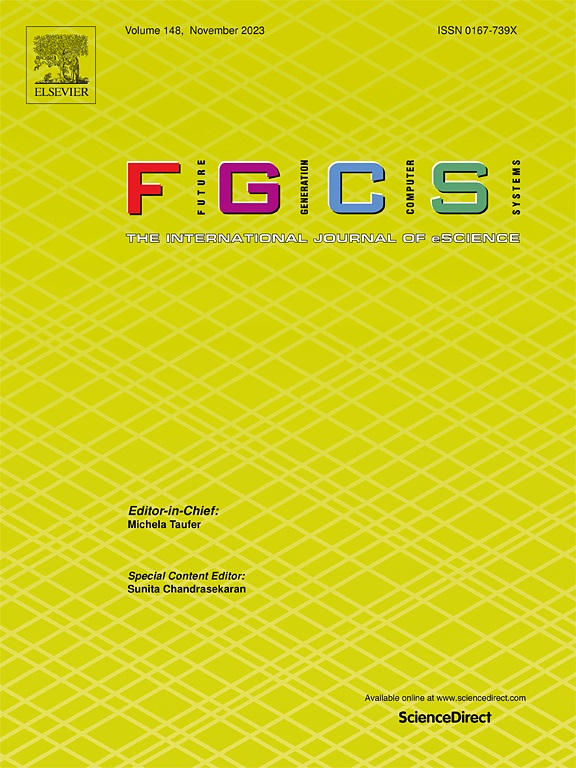多组学和量子机器学习集成用于肺亚型分类
IF 6.2
2区 计算机科学
Q1 COMPUTER SCIENCE, THEORY & METHODS
Future Generation Computer Systems-The International Journal of Escience
Pub Date : 2025-06-05
DOI:10.1016/j.future.2025.107905
引用次数: 0
摘要
多组学数据的整合为癌症诊断和生物标志物发现提供了一个有前景的前沿,特别是对于肺癌等复杂疾病。然而,诸如高维、低样本量和固有数据噪声等挑战阻碍了传统的机器学习方法。量子机器学习(QML)是一个前沿领域,它将量子计算和机器学习连接起来,更有效地解决计算挑战。本研究探讨了QML的应用来解决这些局限性,提供了一个新的框架-多组学QML肺亚型分类(mqml - lunsc)-用于肺癌亚型:肺腺癌(LUAD)和肺鳞状细胞癌(LUSC)。利用量子神经网络和多维特征编码,我们的模型有效地整合了来自TCGA的基因组、表观基因组和转录组数据。该模型不仅实现了较高的分类准确率(训练:0.95;测试:0.90),使用256个编码特征,但也通过优于经典机器学习方法和其他量子模型,显着降低架构复杂性来提高效率。值得注意的是,QNN-64提供了与CNN-64相当的性能,同时保持了更紧凑和资源高效的设计。通过识别关键的区别特征,该方法提高了早期诊断能力,并支持个性化治疗策略。本研究为非常规计算方法在推进生物医学研究和应用方面的未来潜力提供了强有力的实证支持。本文章由计算机程序翻译,如有差异,请以英文原文为准。
Multi-omic and quantum machine learning integration for lung subtypes classification
The integration of multi-omics data presents a promising frontier in cancer diagnosis and biomarker discovery, especially for complex diseases like lung cancer. However, challenges such as high dimensionality, low sample sizes, and inherent data noise hinder traditional machine-learning approaches. Quantum Machine Learning (QML) is a cutting-edge field that bridges quantum computing and machine learning to address computational challenges more effectively. This study explores the application of QML to address these limitations, offering a novel framework-Multi-Omic QML Lung Subtype Classification (MQML-LungSC)-for classifying lung cancer subtypes: lung adenocarcinoma (LUAD) and lung squamous cell carcinoma (LUSC). Leveraging Quantum Neural Networks with multi-dimensional feature encoding, our model efficiently integrates genomic, epigenomic, and transcriptomic data from TCGA. The model not only achieves high classification accuracy (training: 0.95; testing: 0.90) using 256 encoded features, but also demonstrates enhanced efficiency by outperforming classical machine learning methods and other quantum models with a significantly reduced architectural complexity. Notably, QNN-64,delivers performance comparable to CNN-64 while maintaining a more compact and resource-efficient design. By identifying key differentiating features, this approach advances early diagnostic capabilities and supports personalized treatment strategies. This study provides strong empirical support for the future potential of unconventional computing approaches in advancing biomedical research and applications.
求助全文
通过发布文献求助,成功后即可免费获取论文全文。
去求助
来源期刊
CiteScore
19.90
自引率
2.70%
发文量
376
审稿时长
10.6 months
期刊介绍:
Computing infrastructures and systems are constantly evolving, resulting in increasingly complex and collaborative scientific applications. To cope with these advancements, there is a growing need for collaborative tools that can effectively map, control, and execute these applications.
Furthermore, with the explosion of Big Data, there is a requirement for innovative methods and infrastructures to collect, analyze, and derive meaningful insights from the vast amount of data generated. This necessitates the integration of computational and storage capabilities, databases, sensors, and human collaboration.
Future Generation Computer Systems aims to pioneer advancements in distributed systems, collaborative environments, high-performance computing, and Big Data analytics. It strives to stay at the forefront of developments in grids, clouds, and the Internet of Things (IoT) to effectively address the challenges posed by these wide-area, fully distributed sensing and computing systems.

 求助内容:
求助内容: 应助结果提醒方式:
应助结果提醒方式:


